From our house in Kingston, Tasmania we could see snow up on Mt Wellington, so we thought we’d go up and have a closer look. There is a road that leads from Hobart city centre up to the Pinnacle, but it’s sometimes closed to traffic in inclement weather, so we booked a ticket on the Mt Wellington Explorer bus which always has access through the snow gates.
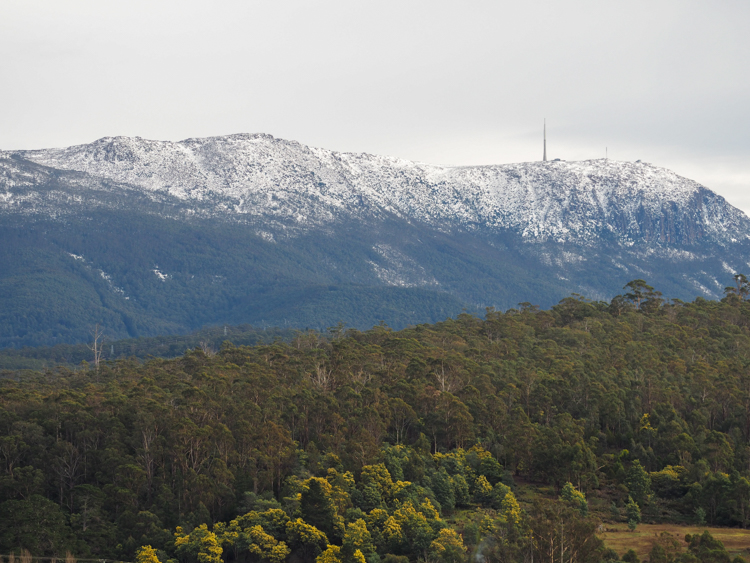
The bus has the advantage of being a hop-on hop-off so you can take advantage of the many trails that lead up and down and around the mountain, and still always get home by flagging down the bus at one of the stops. We hadn’t realised that we would be getting an entertaining guide in the form of the driver, but we did, a wide-ranging history of settlements on and around the mountain.
Up at the top, at 1271 metres, we had snow to play in, and marvellous views of the surrounding islands and bays.
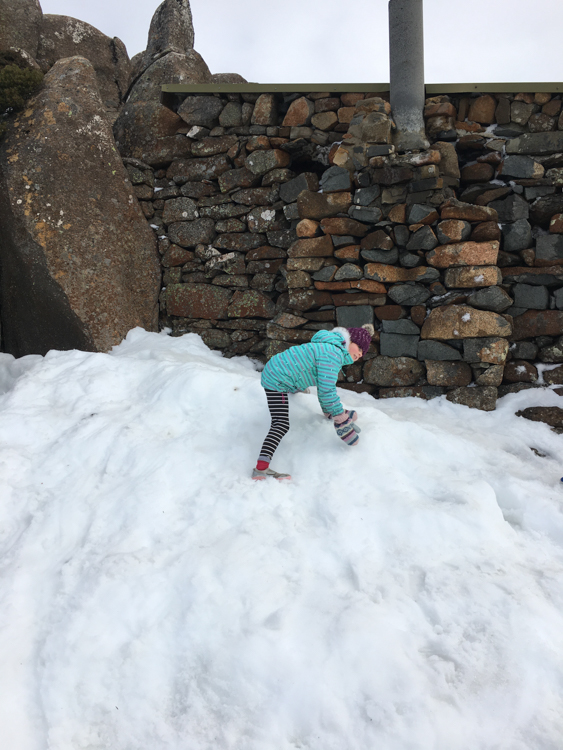
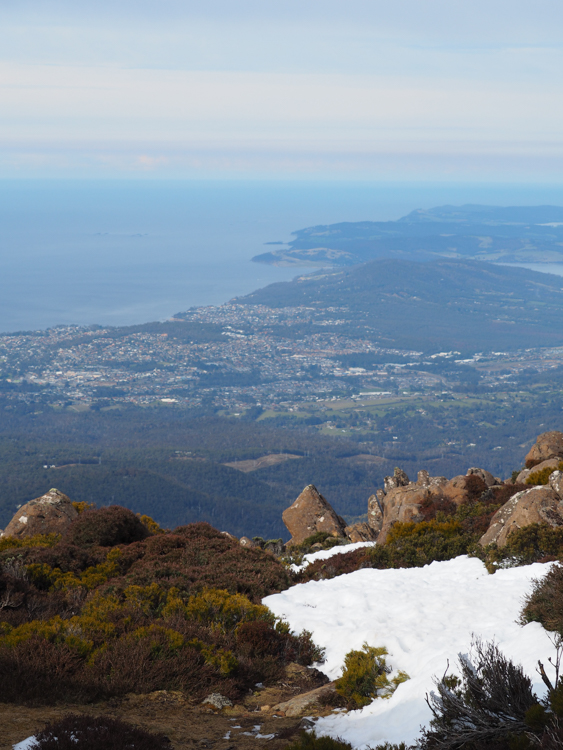
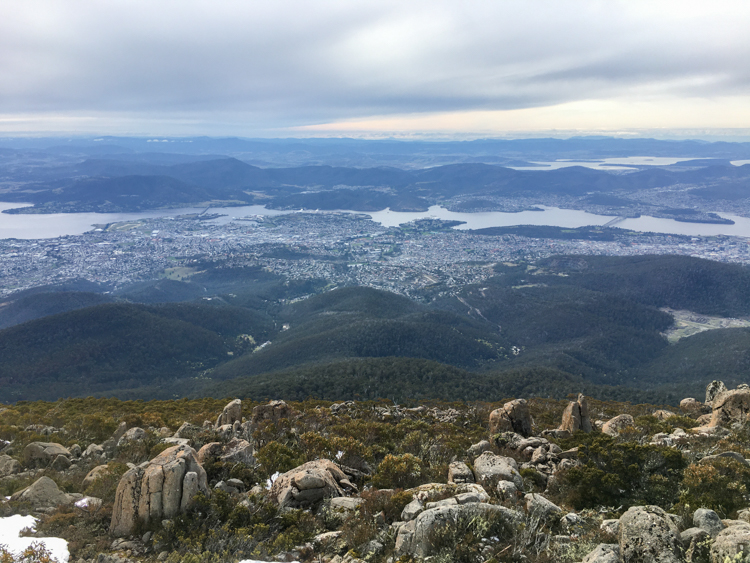
It was frankly freezing in the wintry wind. The temperature at the top of Mt Wellington is usually several degrees colder than Hobart at sea level, and the reason that Hobart is such a comfortable place to live, is that the mountain takes the brunt of all the Antarctic weather.
The bus waits at the top for about half an hour on each trip. We’d spoken to the driver about which walks might be good today, and it was his opinion that the tracks from the Pinnacle were all treacherously icy today, so he recommended dropping us at The Chalet so that we could do the 4km Organ Pipes Track down to The Springs. He also offered to radio the next bus so that they knew to expect us.
The Chalet was an interesting place, a stone hut clearly meant to provide shelter from inclement weather. It had a barbecue outside for sunny days, and a large fireplace and a stack of firewood for those who might be cold and wet.
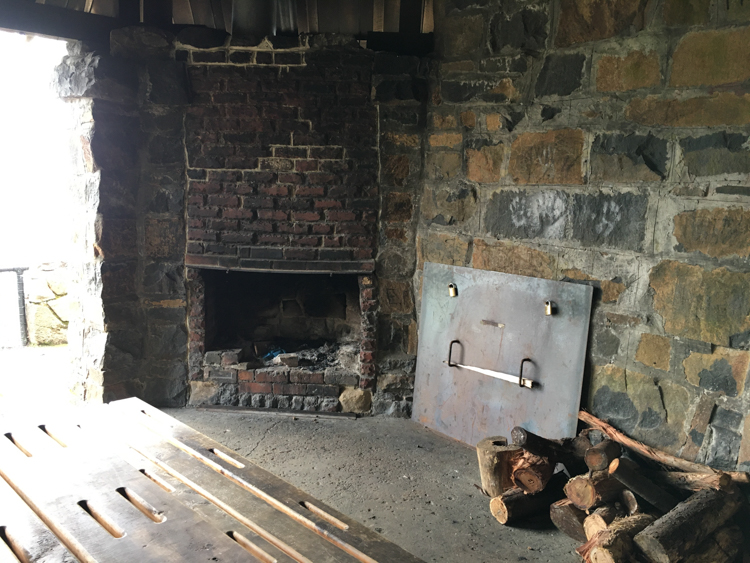
The Springs is downhill from The Chalet, but the path confusingly sets off upward and back towards The Pinnacle. However, it soon sorts itself out and gently follows the contours down towards the base of the Organ Pipes, the most obvious feature of the mountain when viewed from afar.
First, though, it crosses an enormous boulder field, remnants of the great “Glenorchy landslide” of 1872, Tasmania’s most devastating recorded landslip which destroyed a fair few properties on its way to the sea, thankfully with no loss of life. If the same thing happened today, the consequences on North Hobart would be disastrous.
These days, the boulder fields are well bedded in and are popular with climbers.
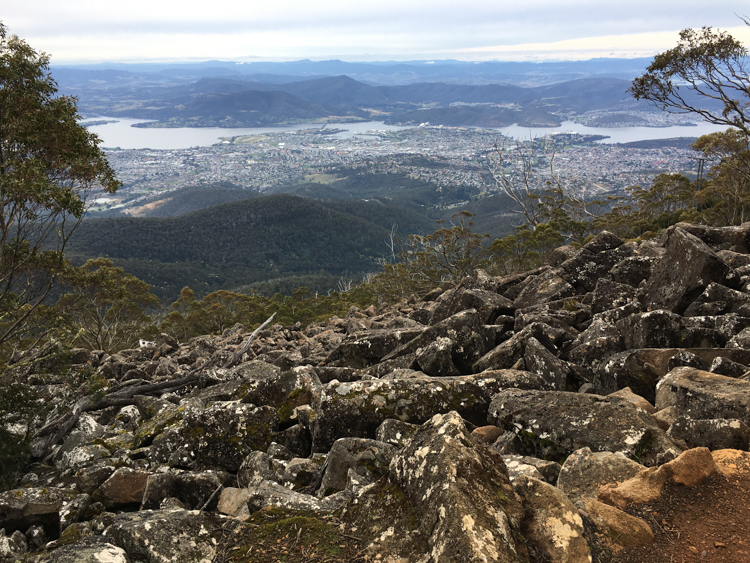
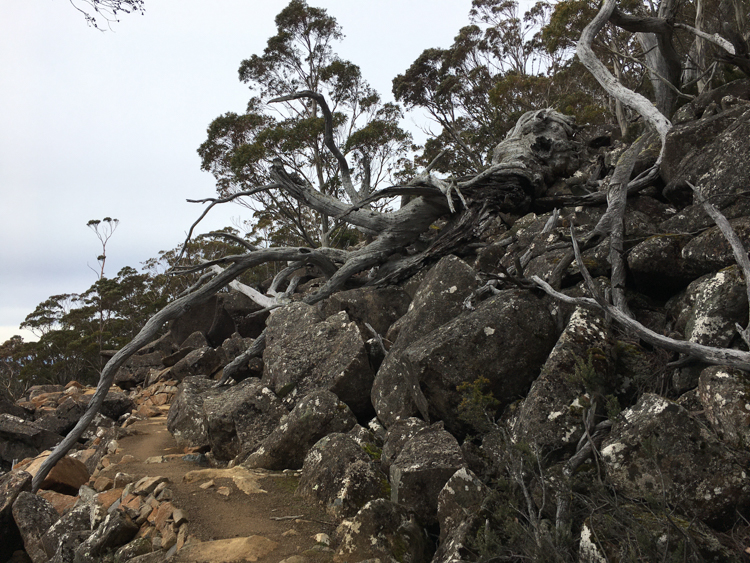
The original Organ Pipes track was built, along with much of the mountain’s infrastructure, in the early 1930s as a way to provide work for the huge numbers of unemployed following the Great Depression (the unemployment rate in Tasmania was 27% in 1931). The work was back-breaking but stood the test of time, with the tracks only being reworked in 2017, itself a mammoth task taking two years.
The new path is constructed largely from painstakingly laid natural stones. and is in itself quite beautiful.
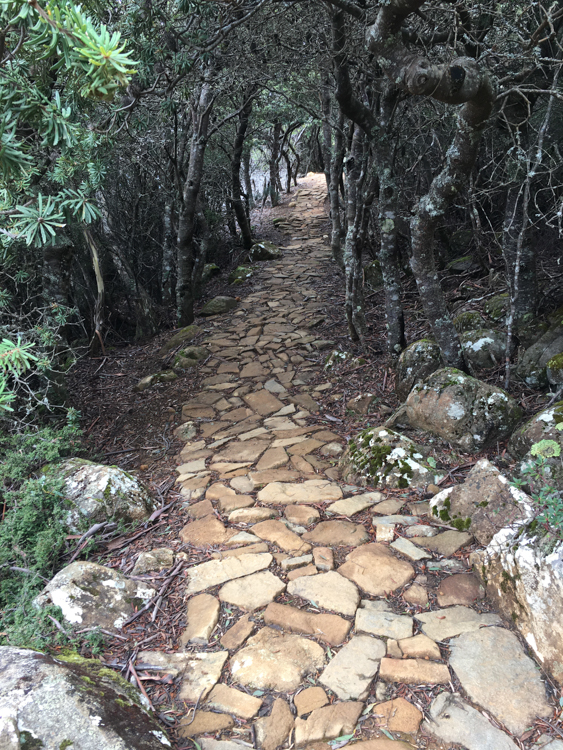
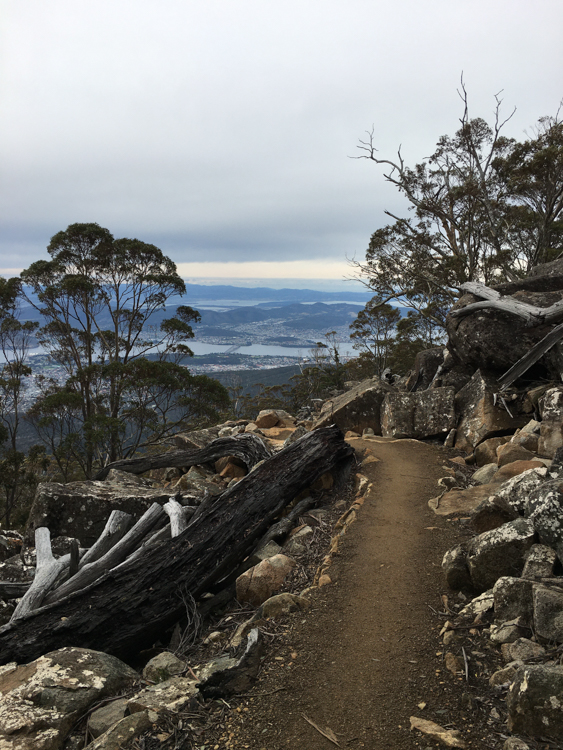
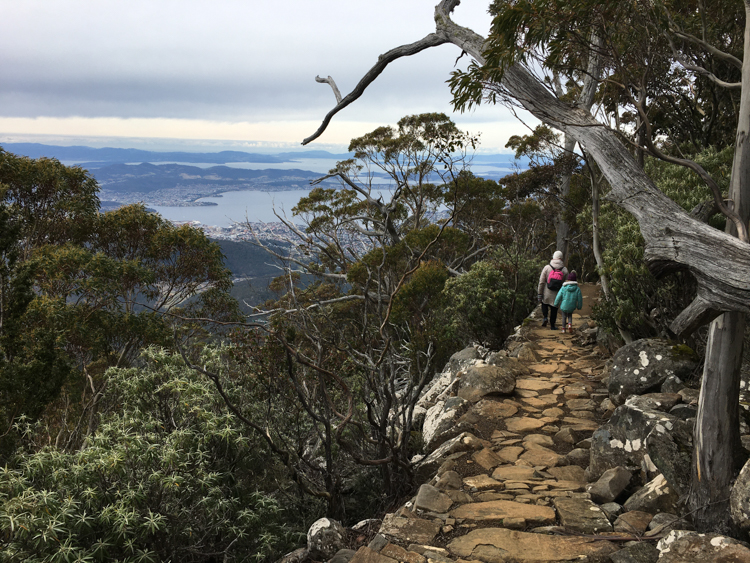
After a while, the Organ Pipes themselves came into view on the right hand side, a formation of massive dolerite pipes. Several marked trails led in that direction, bearing the warning, “suitable only for climbers”.
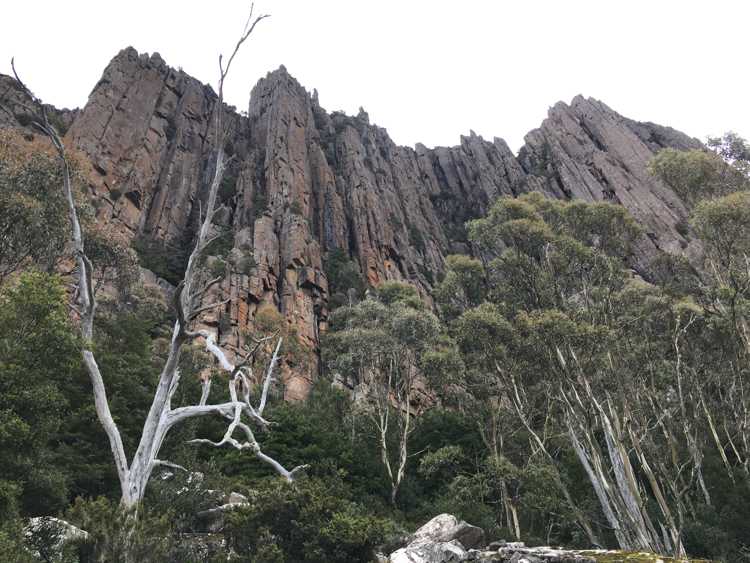
The track then descends into mountain woodlands, with birds flitting about and, on our visit, flowers breaking out to herald the Spring. The purity of the air is demonstrated by the festoons of lichens hanging from the tree branches and clinging to the rocks.
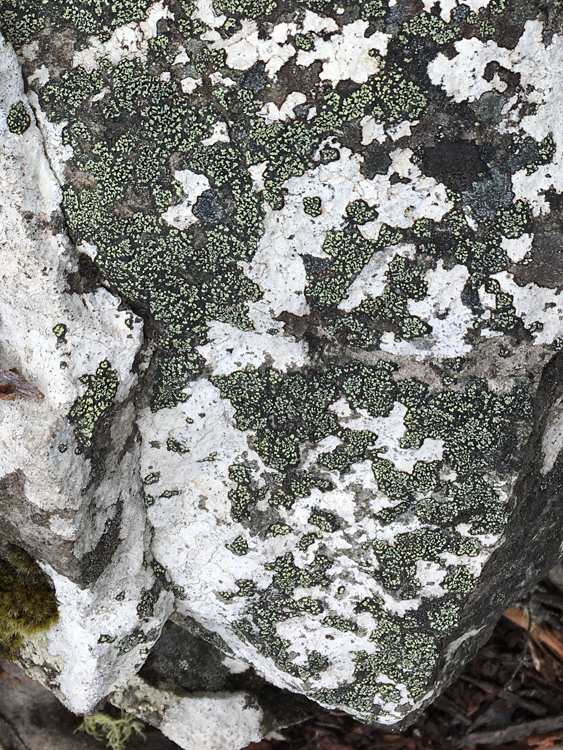
Map lichen
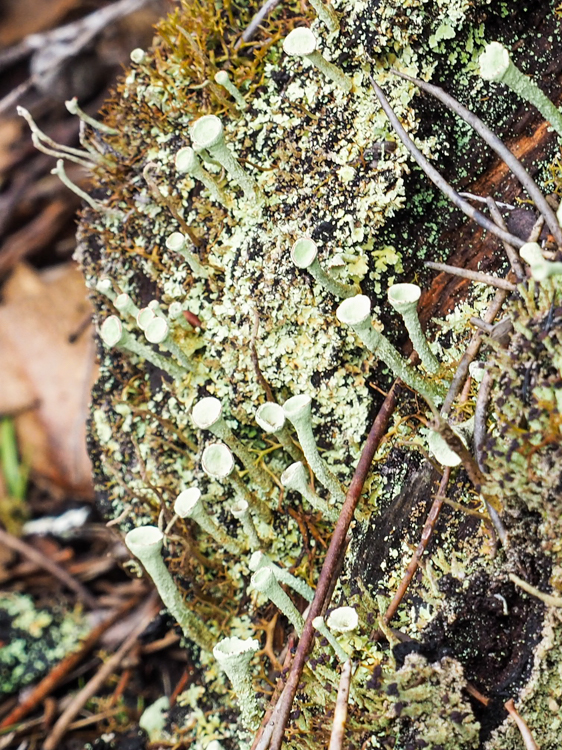
Red-fruited pixie cup
As we descended out of dry sclerophyll and into wet heath forest, we encountered some interesting shrubs endemic to Tasmania, including Richea dracophylla which was just starting to bud.
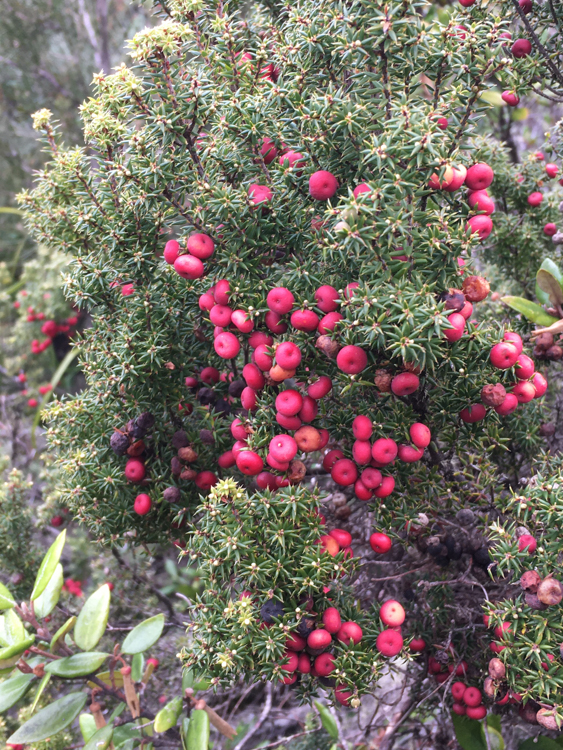
Pink mountain berry
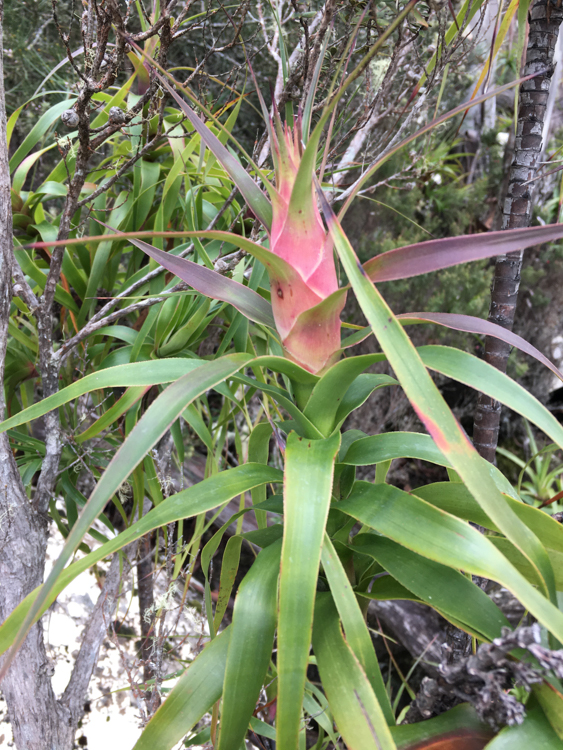
Dragon Leaf Rice Plant
Shortly after this, the track was crossed by a noticeable scar caused by the passage of an enormous rock, 50 tonnes of dolerite that parted company with the Organ Pipes in 2014 and came to rest on the downhill side of the track. Looking uphill, the boulder’s path is still vivid, all the way to the top.
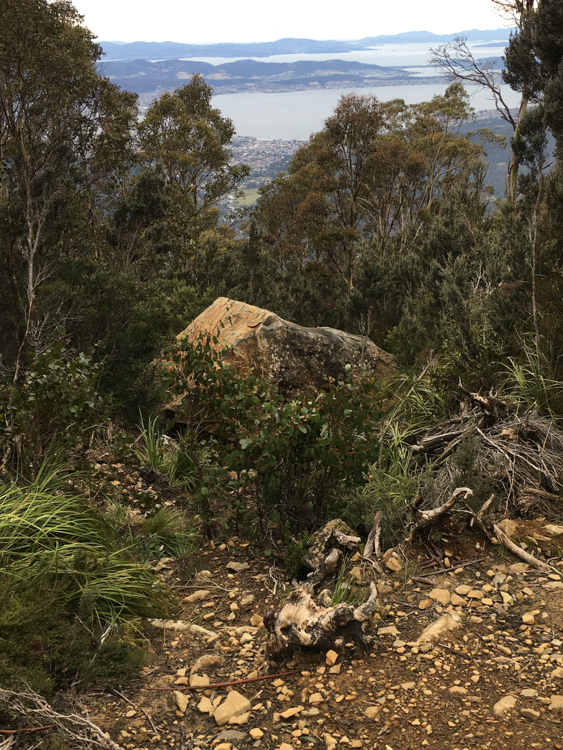
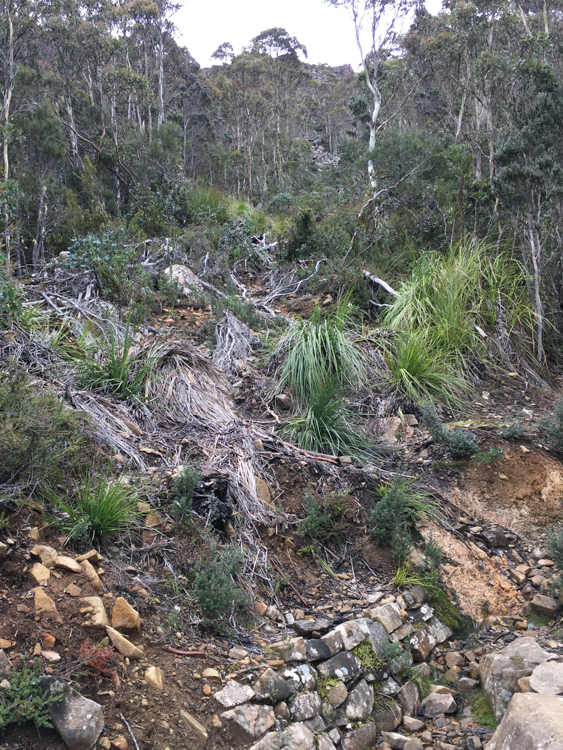
Down at The Springs, with its cafeteria and car park, we found the bus waiting for us at the bus stop, which took us down to the city for a spot of lunch.
Wellington Park, which at 30km across is one of the largest reserved areas in Tasmania (outside the incredible World Heritage Area), is criss-crossed with interesting trails like this one, and we will be back to do some more.
So enjoy your observations of the plants of Tasmania.
Keep them coming 🙂
X